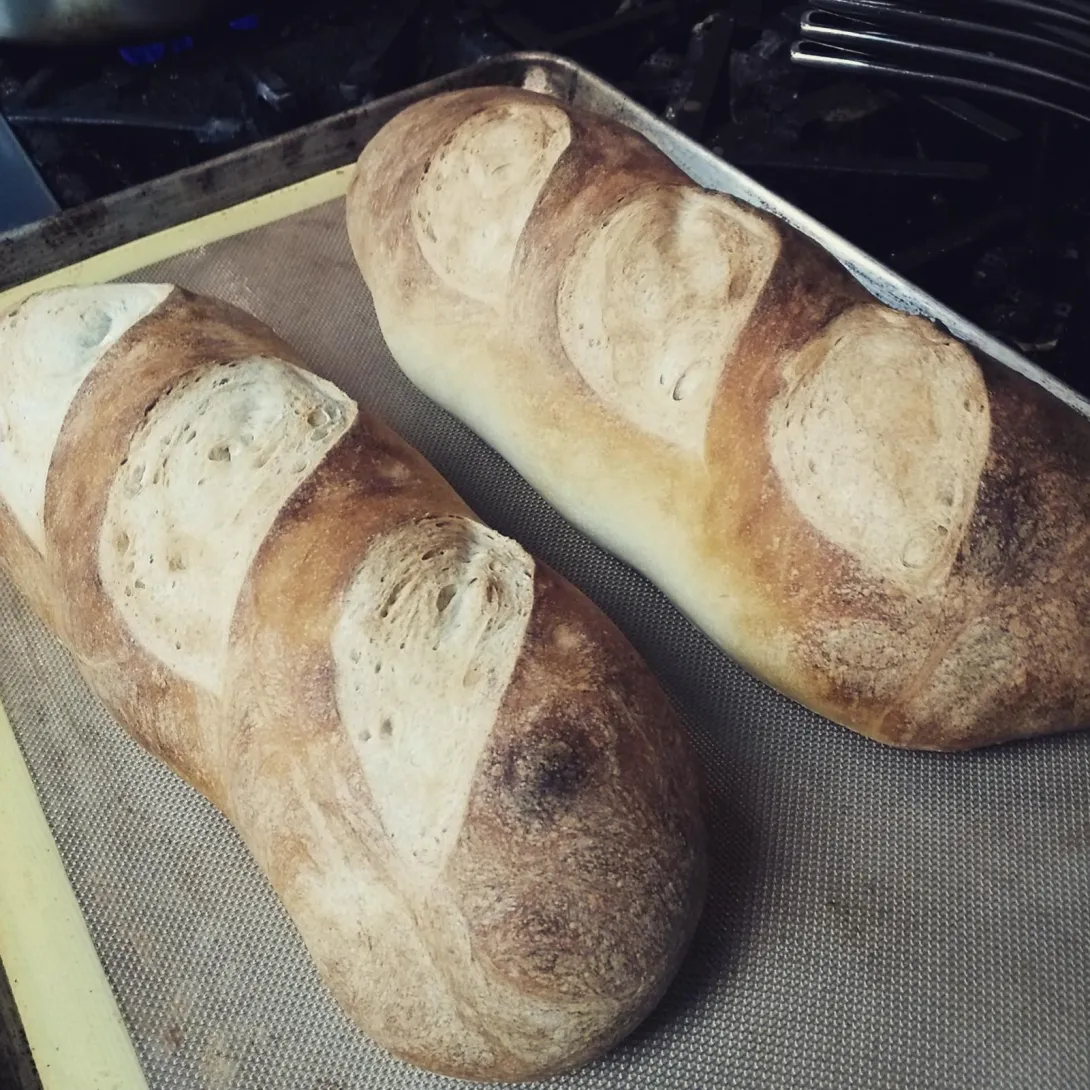
Hi, im new here and have been making bread for about 2 years now. I was hired as a grill cook and our sous chef showed me how he made our house bread. He had been fired for reasons and I was left with his bread starter, and basic knowledge of only knowing how to do this one bread. Practice practice, etc blah blah and now I really enjoy it. Even though I produce a lot of bread now I still cannot figure out math wise our house bread or the process that I use. I was told our starter has beer yeast and champagne yeast in it (unknown amounts) and I feed it with 1:1 water bread flour. Maybe someone could help me just understand what exactly is going on in the recipe. This would help me and be the so called "key" for me to be able to play around a lot more with my current recipes. My process is as follows...
Starter 24hour rest- 500g water
- 500g bread flour
- 870g Water 100% Hydration
- 650g Bread Flour 75% Flour
- 970g Starter
- 10g yeast
- Sponge
- 1000g bread flour
- 8g yeast
I'm sure the guys will help you create an efficient workflow. Here's the analysis of your sponge:
I'm not much of a chemist, but perhaps you could learn from this tutorial on King Arthur Flour regarding the baker's percentage. Basically, all the flours together are totalled by weight in grams, then everything else is a percentage of this weight. So, if you have 1000 grams of flour in the recipe and 850 grams of water, then the water is at 85% (or 85% hydration). You've shown this the other way around for your sponge. To figure out the total hydration of the finished dough, add up all the flour (in the starter, the sponge and the final dough), then add up all the liquid (again in the starter, the sponge and the finished dough). Divide the water number by the flour number and you've got the percent hydration.
Interesting that your starter was apparently started with dry yeast, rather than being a sourdough (with whatever wild yeasts were on the flour). If this starter has been going for quite a while the wild yeasts may have taken it over, along with some good bacterial cultures. Given that you add yeast to both the sponge and the finished dough then the starter itself might not be adding much in the way of yeast, but rather be more for flavour. Does it rise (double) after you feed it? If so, it has live yeast in it. Adding dry yeast to the sponge and dough makes it a hybrid bread in any case (a sourdough spiked with dry yeast).
And please tell me you do actually add salt to the final dough! You can make bread without salt, but the taste will be affected as will the performance of the yeast. The salt should be about 2% of the dough flour weight (so, 20 grams for 1000 grams of flour).
Sorry yes I do add salt! 60g so 30g per loaf. The starter doesn't actually double in size unless our coolers are acting up (as in too high in temperature) and then it doubles out of the container onto anything and everything on the cooler lol. After feeding it (once a day feeding depending on how much bread im making that day) it sits in the cooler until the next day when I use it. I notice it is somewhat firm, there is a structure to it but very wet in feel. Very elastic, a lot of bubbles on the top and I can see some activity on the sides and bottom.So im thinking it's more of a poolish than bigga or sourdough.